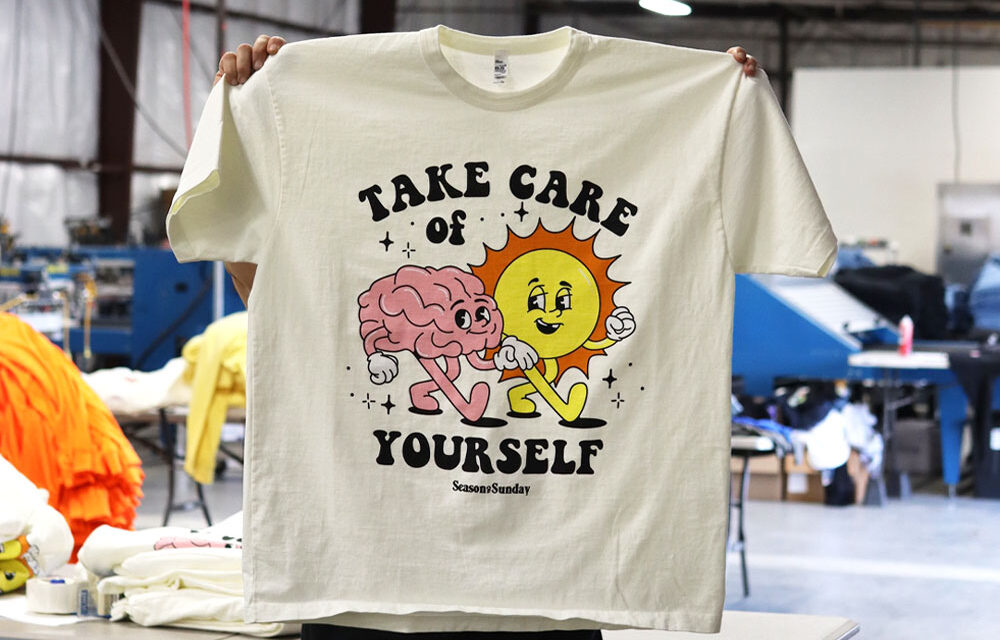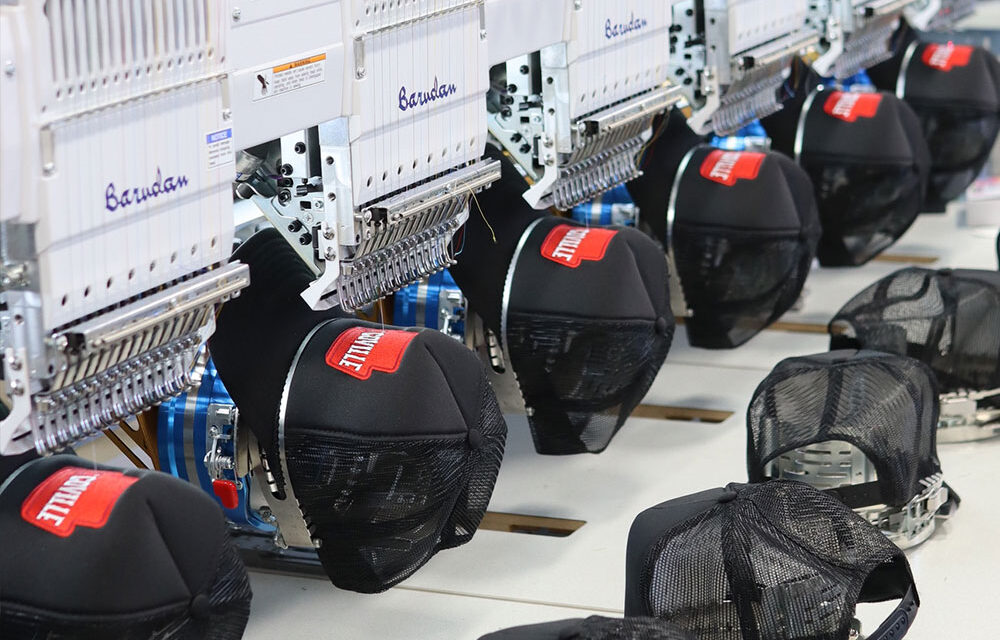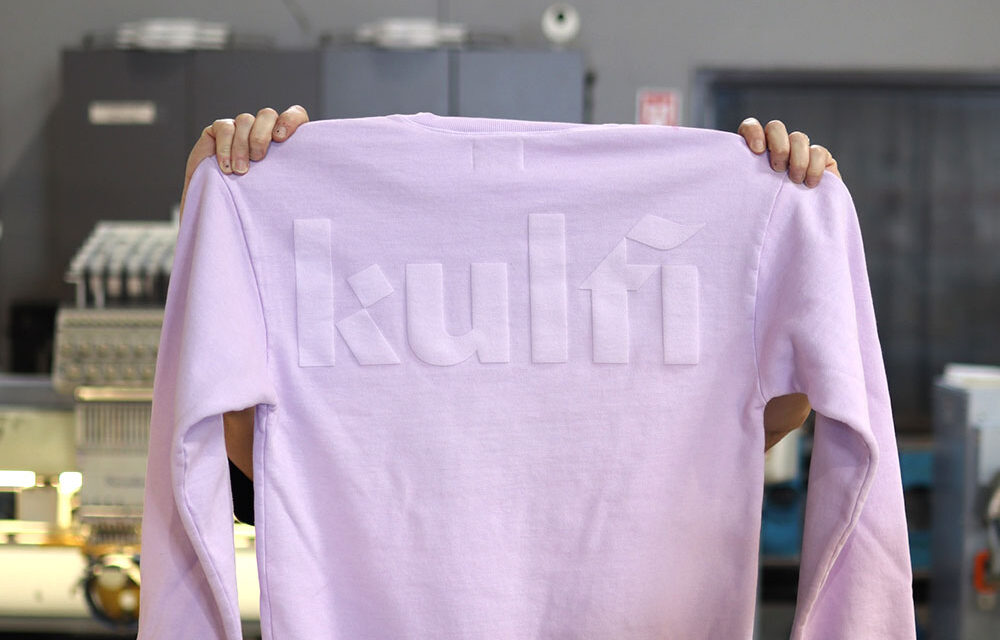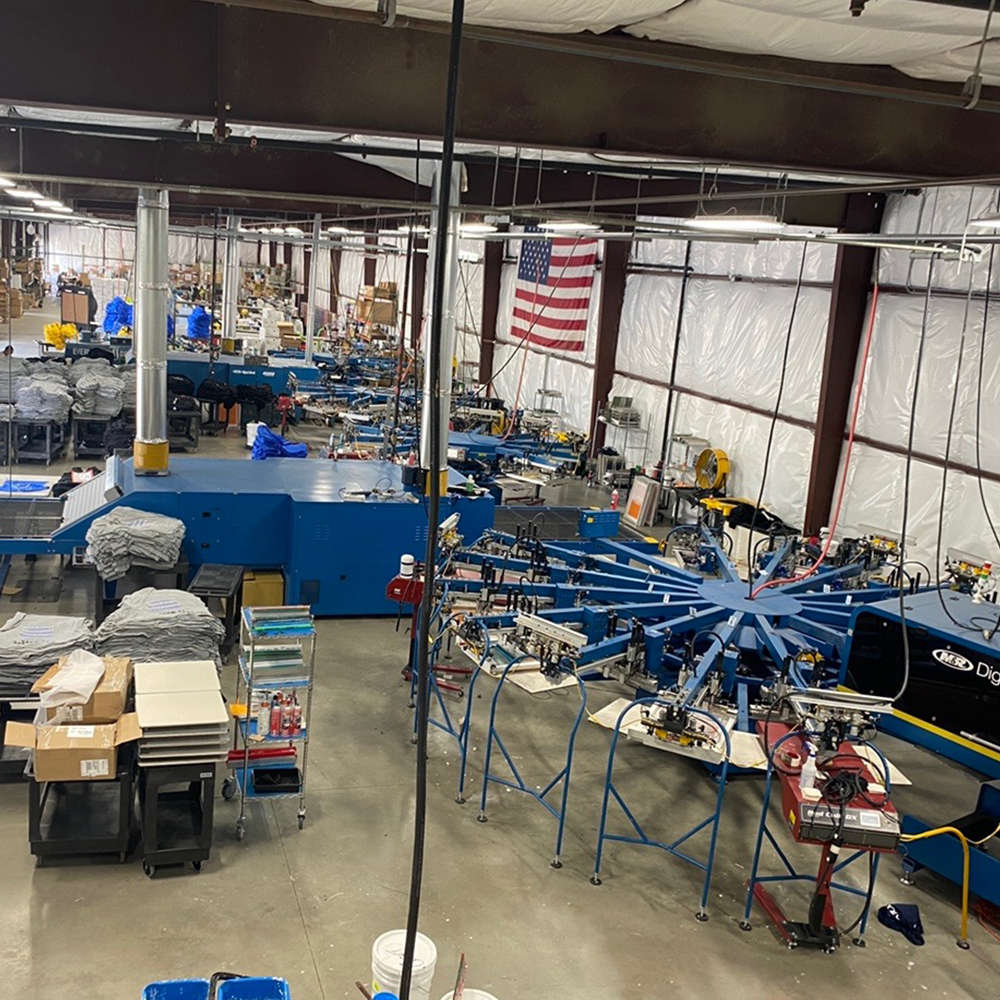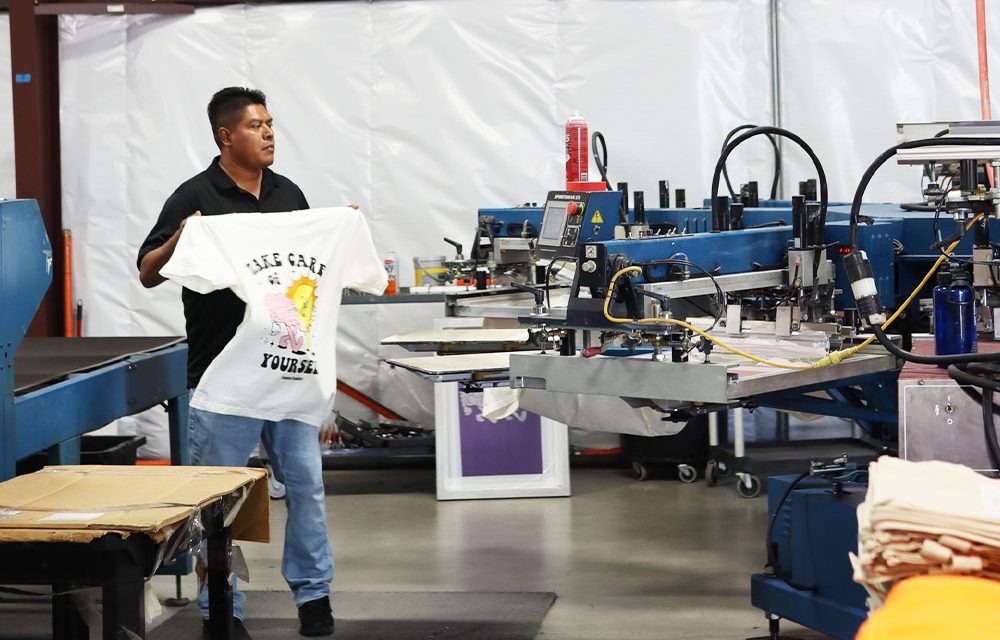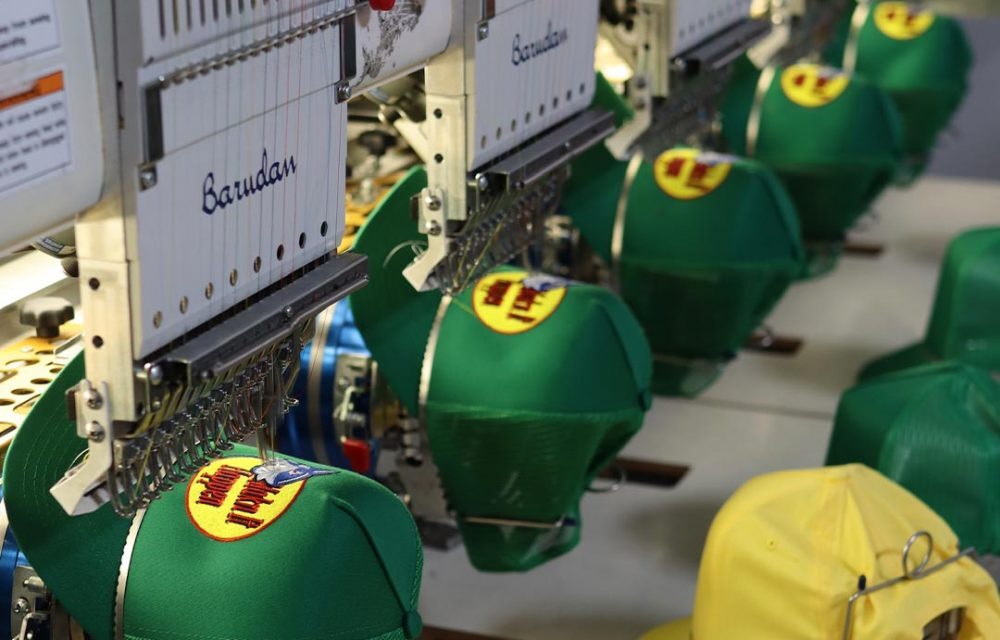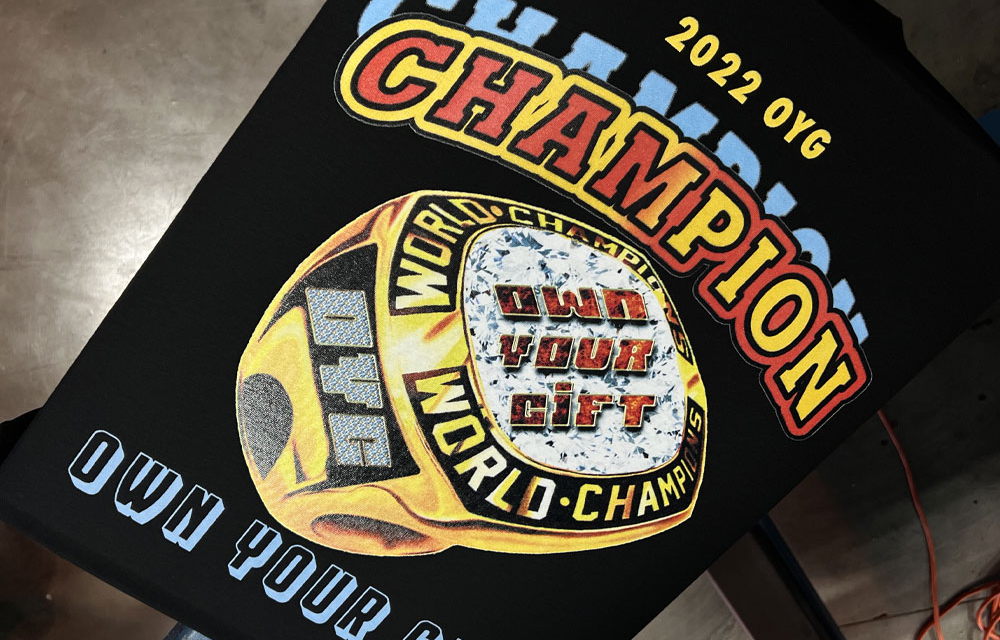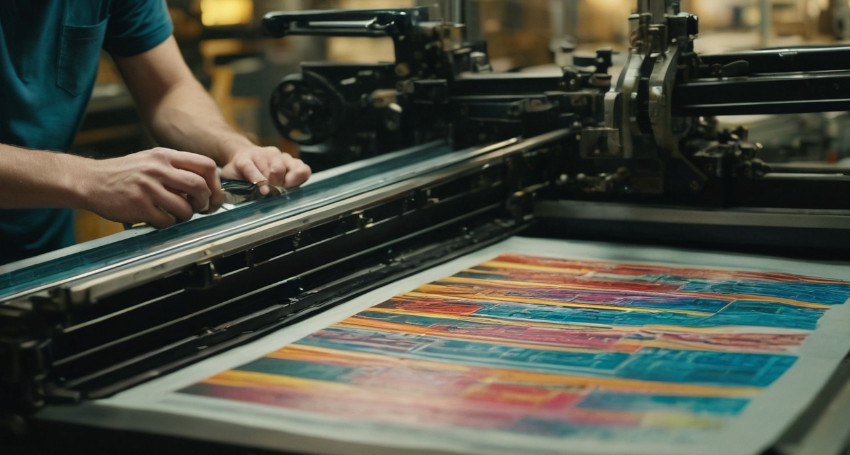An Overview of Popular Printing Techniques
Screen Printing
Screen printing, known for its vibrant colors and durability, is a traditional method where ink is pushed through a mesh stencil onto the substrate. Ideal for large batches and designs with fewer colors, it’s renowned for its high-quality, durable results on a variety of materials.
Digital Printing
Digital printing is a more modern method, where designs are processed by a computer and then printed directly onto the material. It excels in producing detailed, multi-colored designs with precision and is efficient for small to medium-sized orders.
Heat Transfer Printing
Heat transfer involves printing a design onto a special paper and then transferring it onto the substrate using heat and pressure. This method is suitable for detailed, full-color images and small production runs.
Sublimation Printing
Sublimation printing is a process where ink is transformed into a gas and infused into the fabric. It’s best for polyester and polymer-coated substrates and is excellent for vibrant, full-color images that cover the entire garment.
Comparing Quality and Versatility
Durability and Color Vibrancy
- Screen Printing: Offers superior durability and color vibrancy, especially on fabrics.
- Digital Printing: Provides high-quality prints with excellent detail, but may fade faster over time.
- Heat Transfer: Can result in high-quality prints but often lacks the durability of screen printing.
- Sublimation Printing: Produces vibrant colors and durable prints, but is limited to specific materials.
Material Compatibility
- Screen Printing: Versatile across a wide range of materials.
- Digital Printing: Works well on many materials but excels on paper and light fabrics.
- Heat Transfer: Suitable for various materials but requires smooth surfaces for best results.
- Sublimation Printing: Restricted to polyester and polymer-coated substrates.
Efficiency and Cost Considerations
Production Time and Order Volume
- Screen Printing: More time-consuming initial setup; most cost-effective for large orders.
- Digital Printing: Quick setup; ideal for small to medium-sized orders.
- Heat Transfer: Moderate setup time; suitable for small runs and on-demand printing.
- Sublimation Printing: Quick setup; cost-effective for small to medium-sized runs.
Cost-Effectiveness
- Screen Printing: High initial setup cost, but more economical for large volumes.
- Digital Printing: Lower setup cost; price per unit remains consistent regardless of volume.
- Heat Transfer: Variable costs depending on the transfer paper and ink quality.
- Sublimation Printing: Moderate initial investment; relatively low running costs.
Environmental Impact and Ease of Use
Eco-Friendliness
- Screen Printing: Can have a higher environmental impact due to the inks and solvents used.
- Digital Printing: Generally more eco-friendly with less waste and more sustainable ink options.
- Heat Transfer: Depends on the type of transfer paper and inks used.
- Sublimation Printing: Uses eco-friendly, water-based inks.
User Accessibility
- Screen Printing: Requires more skill and equipment.
- Digital Printing: User-friendly and easily accessible.
- Heat Transfer: Moderate skill level required; more accessible than screen printing.
- Sublimation Printing: Requires specific equipment and materials but is relatively straightforward.
In conclusion, each printing method has its unique strengths and limitations. Screen printing stands out for its durability and vibrancy, particularly in large orders. Digital printing offers versatility and precision for smaller runs. Heat transfer and sublimation provide alternatives for full-color and detailed designs but have material limitations. Understanding these differences is key in choosing the right printing method for your specific needs. Stay tuned for our next post, where we’ll guide you through preparing designs for screen printing.

